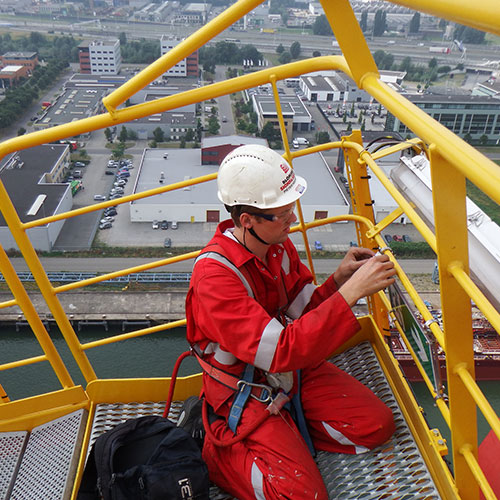- Markets
- Products
- Our work
- Downloads
- Standards and Laws
- Nieuws
- About us
- Contact
Geplaatst op 11 March 2022
Safety zones and EX (ATEX) zones are a hot topic for water treatment plants. Safety, quality and the environment are at the heart of every process in this sector and are inextricably linked. A high degree of hygiene and diverse risks are continuously present; explosion hazard zones, areas and spaces with high H2S concentrations, slippery floors due to polymers, various chemicals such as alkalis and acids and even ozone installations. Understandable and effective safety signage, especially for EX zones, is therefore indispensable for this critical sector.
ATEX directive
The ATEX (Atmosphere Explosible) directive came into force as early as 1996 and, since 2006, existing installations in the water sector have had to comply with this ATEX directive. This applies to WWTPs and related installations.
All installations at water treatment plants must comply with the European Directives for:
These regulations are referred to simply as ATEX 153 Directive 1999/92/EC (formerly ATEX 137) and ATEX 114 (formerly ATEX 95), respectively.
EX-zone signage at a water purification plant
At sewage plants, drinking water purification plants and pumping stations, there are different areas and installations with varying risks. These risks and control measures need to be marked with safety signs, composite signs that show dangers, prohibitions and commandments in a sorted way. When planning safety zone signs, a “peeling principle” aids comprehension and clarity. This avoids the unnecessary repetition of safety symbols. For example, it is unnecessary to display a symbol safety shoes on the entrance to a building when people are already wearing safety shoes because of the wearing requirement previously indicated when entering an area or site. Safety zone signs are used for access to production areas and buildings, confined spaces, substations, pump rooms and many other areas with specific hazards and requirements, among others.
EX zones are specific safety zones, areas with an increased risk of explosion. These areas are especially common at sludge digestion and biogas plants at wastewater and sewage treatment plants. Storage areas for chemicals and receiving stations for natural gas can also be EX zones. These areas must be clearly marked due to legal requirements.
In addition to safety symbols, line markings and deposits are also used for this purpose. ATEX or EX zone impression signs are placed in order to give a clear indication of the EX zones present. The impression boards are illustrative 2D, 3D or photographic displays with the various EX zones shown as colored contours.
The illustration below shows a representation of the most common types of safety signage on a water treatment plant.

Our expertise and experience in the water sector
Our experience in the water sector is reflected in the innovation, dedication, expertise and diligence of our team. A continuously growing group of satisfied clients stimulates harmonization and optimization of safety and signage within this sector. We reinforce our services with our ISO 9001 certification for quality and our VCA certification for safe working.
For an overview of our services and references in the water sector, download our water sector brochure here.
We have already supplied many organizations in the water sector with EX-zone marking. Would you like to contact us directly for more information or a quotation? Please contact our team: contact@blomsma-safety.com.

The annual ISO9001 and SCC audit has taken place again in the past few days. Both the ISO9001:2015 and the SCC*2008/5.1 were checked during this annual audit. ...

Blomsma Signs & Safety GmbH has been chosen by Nordenhamer Zinkhütte GmbH as a partner for the preparation of the evacuation plans. As a Glencore company, Nordenhamer Zinkhütte p ...

Blomsma Signs & Safety is selected bij Wintershall Noordzee to provide and install all the required safety signs for the L6B gasproduction platform. ...
Want to know more?
Contact us.